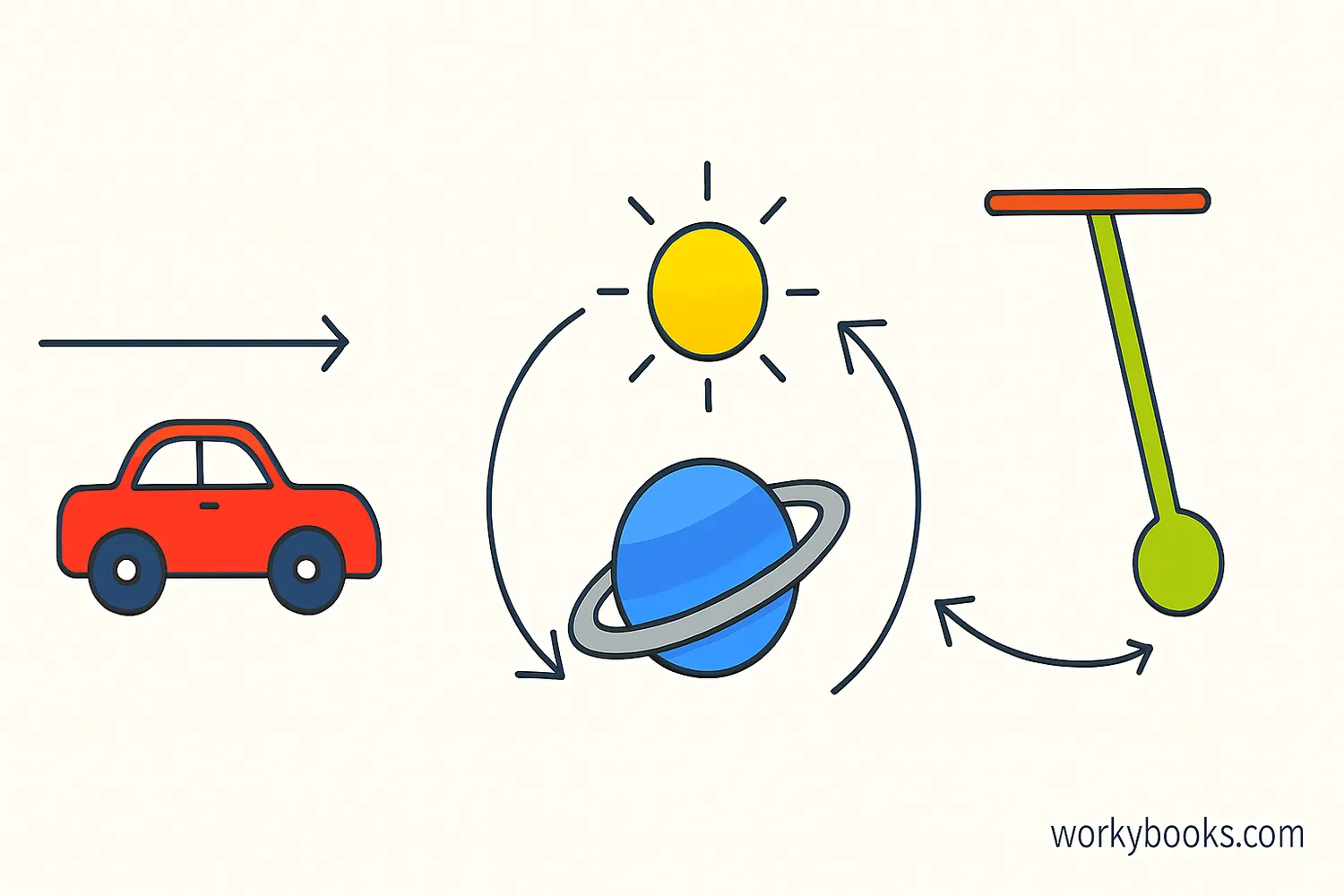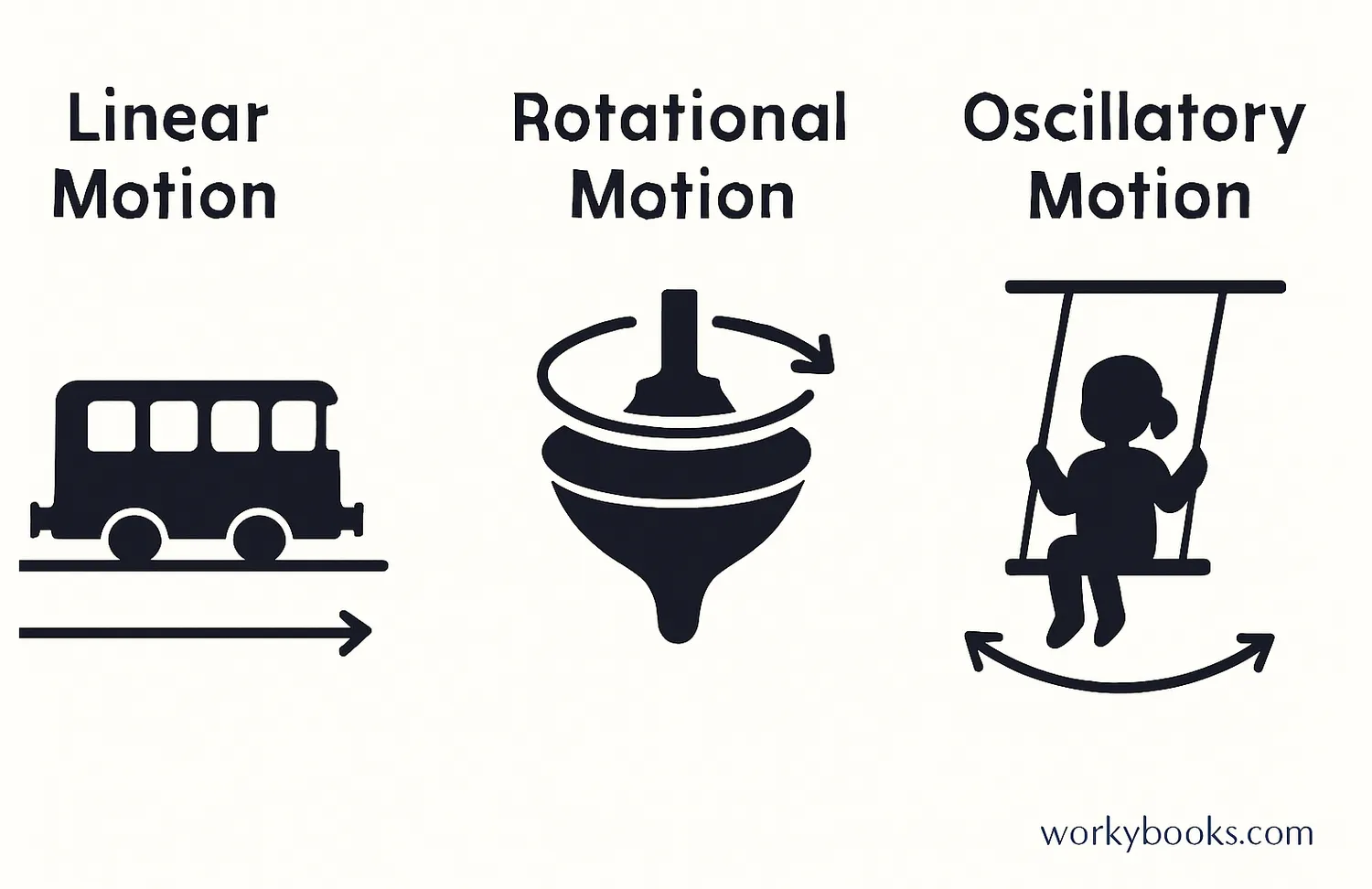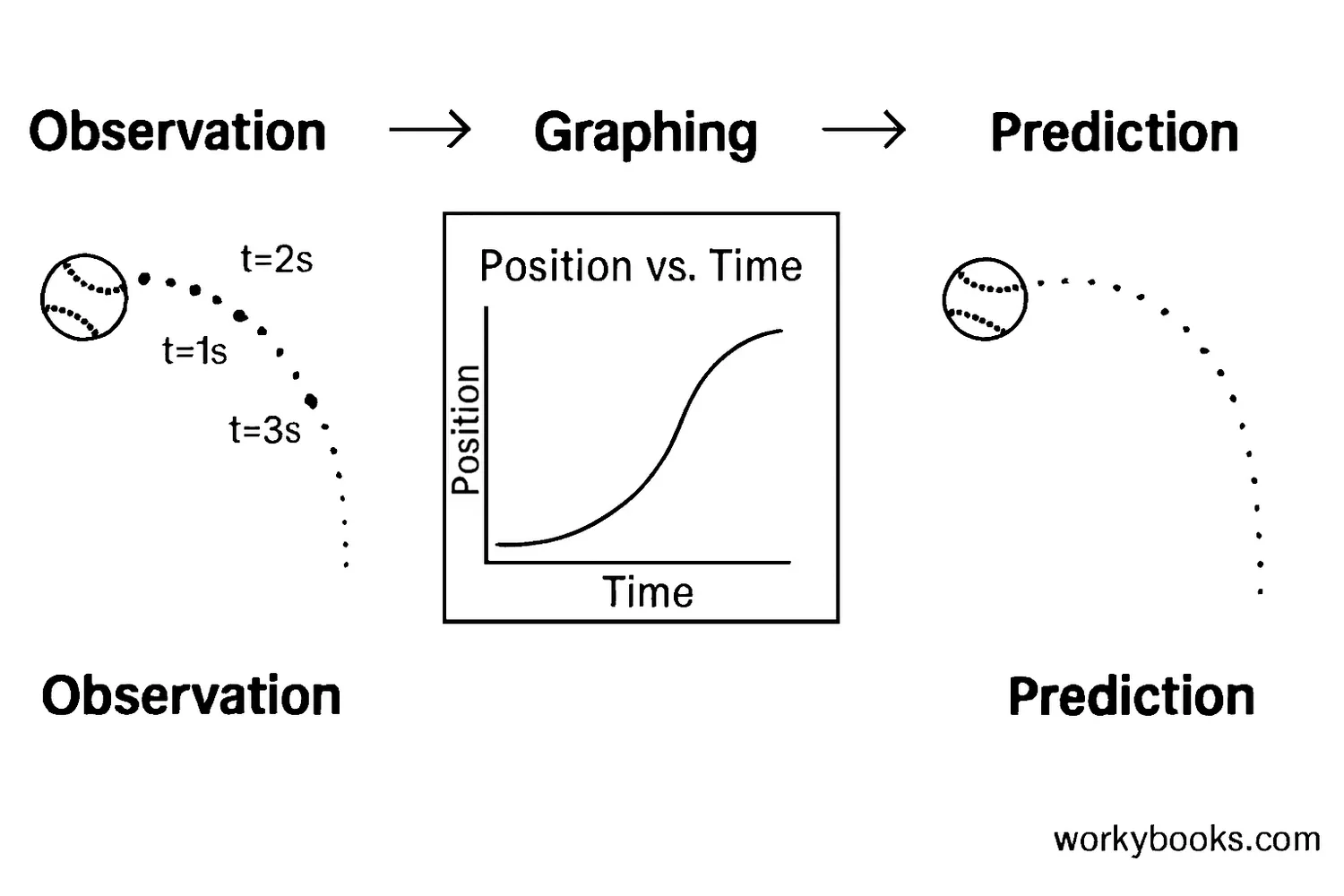Motion Patterns - Definition, Examples, Quiz, FAQ, Trivia
Discover how objects move in predictable ways and learn to recognize patterns in movement
What are Motion Patterns?

Motion patterns are the predictable ways that objects move through space. By studying these patterns, we can understand and even predict how objects will move in different situations.
Key facts about motion patterns:
• Motion patterns help us predict where objects will be in the future
• Patterns can be simple (straight lines) or complex (spirals)
• Recognizing patterns helps engineers design better machines
• Animals and humans use motion patterns for navigation
Think of motion patterns like a dance routine. Once you learn the steps (pattern), you can predict what move comes next!
Key Concept
A motion pattern is a repeated sequence of movement that can be observed, described, and predicted. Scientists use patterns to understand how objects move through space and time.
Linear Motion
Objects moving in straight lines, like cars on a highway or arrows shot from a bow.
Circular Motion
Objects moving in circles or arcs, like Ferris wheels or planets orbiting stars.
Oscillating Motion
Objects moving back and forth, like pendulums or swings on a playground.
Types of Motion

Scientists categorize motion into several main types based on the pattern of movement:
Main types of motion patterns:
• Linear Motion: Movement in a straight line
• Rotational Motion: Spinning or turning around an axis
• Oscillatory Motion: Repeated back-and-forth movement
• Random Motion: Movement with no predictable pattern
• Periodic Motion: Movement that repeats at regular intervals
Many objects combine different types of motion. For example, a basketball spinning while moving through the air shows both rotational and linear motion!
Linear Motion
- Description: Movement in a straight path
- Examples: Cars on a straight road, falling objects
- Pattern: Consistent direction, constant or changing speed
Rotational Motion
- Description: Spinning around an axis
- Examples: Earth's rotation, spinning tops
- Pattern: Circular path around a central point
Oscillatory Motion
- Description: Repeated back-and-forth movement
- Examples: Pendulum clocks, guitar strings
- Pattern: Regular swinging between two points
Combined Motion Patterns
Many objects exhibit combined motion patterns. A bicycle wheel rotates around its axle while moving linearly forward. A thrown football spins (rotational motion) while following a curved path (projectile motion).
Recognizing Motion Patterns

Recognizing motion patterns helps us understand how objects move and predict their future positions. Scientists use tools like graphs, diagrams, and mathematical models to identify and describe these patterns.
How to recognize motion patterns:
• Look for repeating sequences in movement
• Measure position changes over time
• Create graphs to visualize the pattern
• Compare with known pattern types
Pattern recognition isn't just for scientists! Animals use it to catch prey, athletes use it to improve performance, and video game designers use it to create realistic movements.
Graph Analysis
Creating position-time or velocity-time graphs to visualize motion patterns and identify trends.
Pattern Identification
Looking for repeating sequences, regular intervals, or predictable changes in movement.
Prediction
Using identified patterns to forecast where objects will be in the future.
Real World Application
Weather forecasters use motion patterns to predict storm paths. Sports analysts use player movement patterns to develop strategies. Astronomers use orbital patterns to predict planet positions and comet appearances.
Motion Patterns Quiz
Test your knowledge of motion patterns with this 5-question quiz. Choose the correct answer for each question.
Frequently Asked Questions
Here are answers to common questions about motion patterns:
Science Trivia
Discover amazing facts about motion patterns:
Planetary Motion
Johannes Kepler discovered in the 17th century that planets follow elliptical (oval-shaped) orbits around the sun, not perfect circles as previously thought. This was a major breakthrough in understanding motion patterns in space.
Animal Motion Patterns
Many fish swim in schools using coordinated motion patterns that help protect them from predators. Their movements are so synchronized that the entire school can appear to be a single large organism.
Motion Capture Technology
Movie animators use motion capture technology to record the movement patterns of actors. These patterns are then applied to digital characters to make their movements look realistic in films and video games.
Atomic Motion
Even at the atomic level, particles follow motion patterns. Atoms vibrate in predictable patterns based on temperature, and electrons move around atomic nuclei in specific orbital patterns that determine chemical properties.


